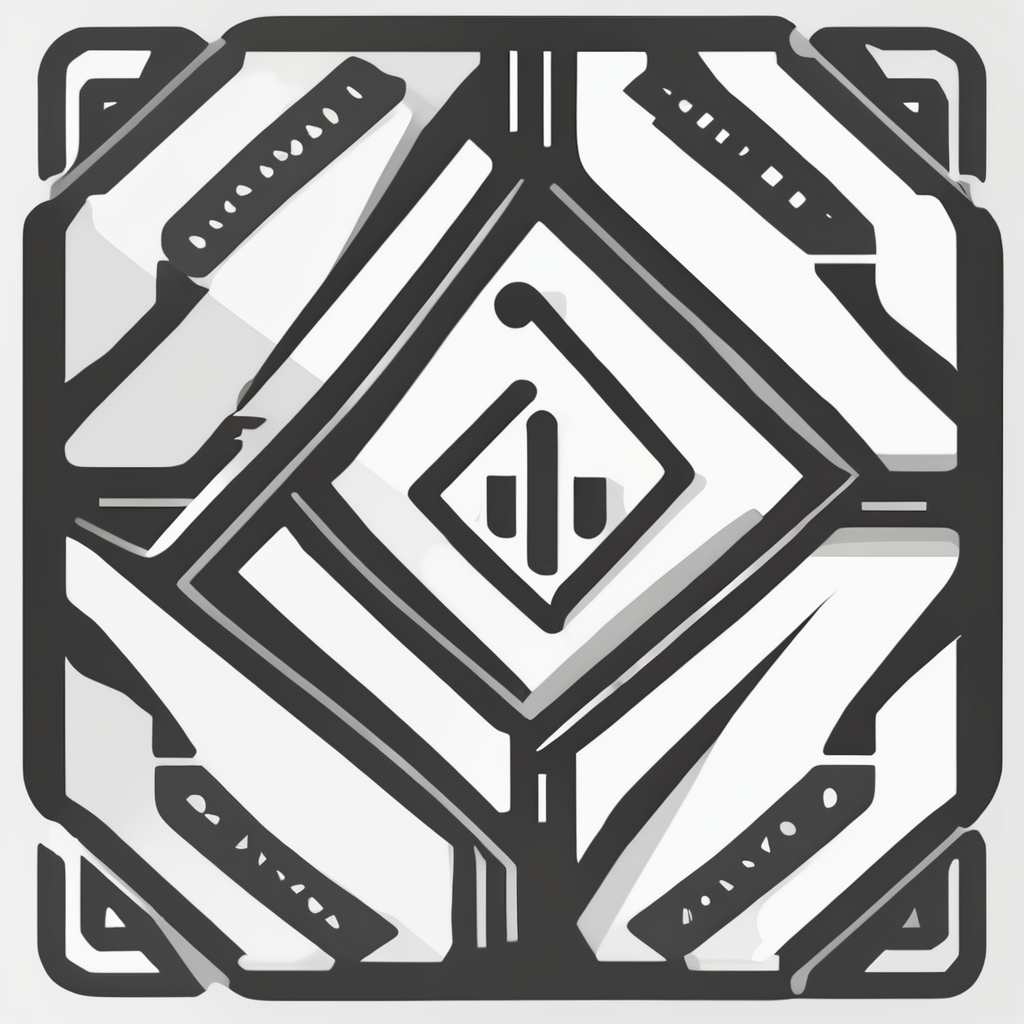Transforming Public Infrastructure: The Impact of IoT Technology on Monitoring and Maintenance Solutions
In the era of rapid technological advancement, the Internet of Things (IoT) has emerged as a game-changer in the management and maintenance of public infrastructure. From smart cities to efficient public transportation, IoT technology is revolutionizing how we monitor, maintain, and optimize our urban systems. Here’s a deep dive into the impact of IoT on public infrastructure, highlighting its benefits, applications, and future directions.
The Role of IoT in Infrastructure Monitoring
IoT technology is fundamentally changing the way we monitor and maintain public infrastructure. By deploying IoT-enabled sensors and devices, cities can gather real-time data on the health and performance of their infrastructure.
In parallel : Unveiling the quantum internet revolution: future cybersecurity impacts you need to know
Real-Time Data Collection
IoT sensors can be integrated into various components of public infrastructure, such as roads, bridges, buildings, and public transportation systems. These sensors collect real-time data on parameters like vibration levels, temperature fluctuations, and operational efficiency. For instance, in manufacturing environments, IoT sensors can track machinery performance, environmental conditions, and output in real time, enabling predictive maintenance and reducing downtime[2].
Predictive Maintenance
One of the most significant advantages of IoT in infrastructure monitoring is predictive maintenance. By analyzing the data collected from IoT sensors, cities can predict potential failures and schedule maintenance accordingly. This approach, known as condition-based maintenance (CBM), ensures that maintenance is performed only when necessary, preventing costly breakdowns and extending the life of critical assets. According to McKinsey, IoT-enabled maintenance solutions can reduce equipment downtime by up to 50% and lower maintenance costs by 20-30%[1].
Also to see : Transforming emergency response: the role of ai in advanced structural damage detection in buildings
Smart Cities and Urban Management
The concept of smart cities is built around the idea of using technology to make urban living more efficient, sustainable, and safe. IoT plays a central role in this vision.
Smart Traffic Management
IoT devices can be used to optimize traffic flow in cities. By installing sensors at traffic intersections and along roads, cities can collect real-time data on traffic congestion. This data can be analyzed using machine learning algorithms to predict traffic patterns and recommend alternative routes, thereby reducing congestion and improving travel times. For example, smart traffic systems in cities like Singapore use IoT data to adjust traffic light timings dynamically, ensuring smoother traffic flow[5].
Energy-Efficient Systems
IoT can also help cities manage their energy consumption more efficiently. Smart grids and smart lighting systems can adjust energy supply based on real-time demand. For instance, smart lighting systems can adjust brightness based on the time of day and the presence of people, reducing energy waste and lowering energy bills.
Public Safety Enhancements
IoT devices can enhance public safety in several ways. Connected surveillance cameras can monitor crime-prone areas in real time, and sensors can detect natural calamities like floods, earthquakes, and wildfires, sending early warnings to minimize damage. IoT-enabled emergency response systems ensure quick communication and allocation of resources during emergencies, making response times faster and more effective[5].
IoT Applications in Public Services
IoT technology is being applied across various public services to improve efficiency, safety, and citizen satisfaction.
Public Transportation
IoT can transform public transportation by making it more efficient and reliable. For example, IoT sensors can monitor the health of public transportation vehicles, predicting maintenance needs and reducing downtime. Real-time tracking of buses and trains can also help in optimizing routes and schedules, improving the overall passenger experience.
Waste Management
Smart waste management systems use IoT sensors to monitor waste levels in bins and optimize collection routes. This ensures that waste is collected only when necessary, reducing the number of collection trips and lowering operational costs. Additionally, IoT sensors can track the condition of waste management infrastructure, such as compactors and recycling facilities, enabling predictive maintenance and extending their lifespan[5].
Air Quality Monitoring
IoT devices can be used to monitor air quality in urban areas. By deploying sensors that track pollutants like particulate matter, nitrogen dioxide, and ozone, cities can get real-time data on air quality. This data can be used to implement policies that reduce pollution, such as restricting traffic in high-pollution areas or increasing the use of public transportation.
Challenges and Considerations
While IoT technology offers numerous benefits, its implementation also comes with several challenges.
Security and Privacy Concerns
One of the primary concerns with IoT is security. As IoT devices generate massive amounts of data, ensuring the security of this data is crucial. Cities must implement robust cybersecurity measures to protect against data breaches and cyberattacks. For instance, in 2023, there was a 37% increase in IoT malware attacks, highlighting the need for enhanced security protocols[2].
Data Management and Integration
Another challenge is the integration of IoT systems with existing infrastructure. Cities need to ensure that their IoT systems can seamlessly integrate with other city systems, such as transportation and energy management systems. This requires significant investment in data management and integration technologies.
Cost of Implementation
The initial cost of implementing IoT systems can be high. Cities need to invest in devices, networks, and data analytics platforms, which can be a significant financial burden. However, the long-term savings and efficiency gains often justify these costs.
Future Directions
As IoT technology continues to evolve, we can expect several advancements that will further transform public infrastructure.
Increased Adoption of AI and Machine Learning
Artificial intelligence (AI) and machine learning (ML) will play a more prominent role in IoT applications. AI can analyze the vast amounts of data generated by IoT devices, providing actionable insights and enabling predictive analytics. For example, AI can predict traffic congestion, maintenance needs, and energy demand, allowing cities to make data-driven decisions[5].
Expansion of Observability
The concept of observability, which goes beyond traditional monitoring to provide a deeper understanding of system behavior and performance, will become increasingly important. This will enable cities to gain greater visibility into their complex, distributed infrastructures and make more informed decisions.
Integration with DevOps and Site Reliability Engineering (SRE)
IoT monitoring will become more closely integrated with DevOps and SRE practices. This integration will enable seamless collaboration between development, operations, and monitoring teams, driving continuous improvement and optimization of IT infrastructure[3].
Practical Insights and Actionable Advice
For cities looking to leverage IoT technology, here are some practical insights and actionable advice:
- Start Small: Begin with pilot projects to test the efficacy of IoT solutions before scaling up.
- Invest in Training: Ensure that your IT team has the necessary skills and knowledge to configure, maintain, and optimize IoT systems.
- Focus on Data Analytics: Use advanced analytics and data visualization tools to extract actionable insights from IoT data.
- Prioritize Security: Implement robust cybersecurity measures to protect against data breaches and cyberattacks.
- Integrate with Existing Systems: Ensure that IoT systems can seamlessly integrate with other city systems to maximize efficiency.
Case Studies and Examples
Several cities and organizations have already seen significant benefits from implementing IoT solutions.
The Louvre Museum
The Louvre Museum in Paris implemented a computerized maintenance management tool and deployed IoT-enabled systems to monitor the microclimate of sensitive paintings like the Mona Lisa. This helped in making preventative maintenance more streamlined and efficient, ensuring that the museum could keep most of its galleries open daily[4].
The Leaning Tower of Pisa
The Leaning Tower of Pisa uses an automatic structural monitoring system with IoT sensors to detect stress, vibrations, and material degradation. This early detection allows for proactive maintenance, ensuring the stability of the tower and preventing potential disasters[4].
IoT technology is transforming the way we manage and maintain public infrastructure. From predictive maintenance to smart traffic management, IoT offers a plethora of benefits that can make urban living more efficient, sustainable, and safe. As cities continue to adopt and integrate IoT solutions, we can expect even more innovative applications that will drive better business outcomes and improve the quality of life for citizens.
Table: Benefits of IoT in Public Infrastructure
| Benefit | Description | Example |
|---|---|---|
| Predictive Maintenance | Predict potential failures and schedule maintenance accordingly. | Reduces equipment downtime by up to 50% and lowers maintenance costs by 20-30%[1]. |
| Smart Traffic Management | Optimize traffic flow using real-time data. | Smart traffic systems in Singapore adjust traffic light timings dynamically to reduce congestion[5]. |
| Energy Efficiency | Adjust energy supply based on real-time demand. | Smart lighting systems adjust brightness based on the time of day and presence of people[5]. |
| Public Safety Enhancements | Monitor crime-prone areas and detect natural calamities in real time. | Connected surveillance cameras and sensors detect floods, earthquakes, and wildfires, sending early warnings[5]. |
| Improved Public Services | Optimize public transportation, waste management, and air quality monitoring. | Smart waste management systems optimize collection routes and reduce operational costs[5]. |
Detailed Bullet Point List: Key Components of Effective IoT Infrastructure Monitoring
- Establish Comprehensive Monitoring Coverage: Ensure that monitoring agents are deployed across all critical components of the infrastructure, including servers, networks, cloud resources, databases, and applications[3].
- Prioritize Monitoring Metrics: Identify the most important metrics and key performance indicators (KPIs) that align with monitoring objectives and focus efforts on tracking and analyzing these metrics[3].
- Set Appropriate Thresholds and Alerts: Configure the monitoring system to trigger alerts based on well-defined thresholds, ensuring timely notifications of issues without unnecessary alerts[3].
- Implement Proactive Monitoring: Set up predictive monitoring capabilities to identify potential problems before they occur, allowing for preventive actions and minimizing impact[3].
- Leverage Automation and Scripting: Automate routine monitoring tasks, incident response, and remediation actions to improve efficiency and reduce the risk of human error[3].
- Regularly Review and Optimize: Ensure the monitoring system can scale with the growing and evolving infrastructure, and regularly review and optimize the system to maintain performance and functionality[3].
By understanding and implementing these components, cities can build robust IoT infrastructure monitoring systems that enhance performance, improve reliability, and support long-term scalability.











